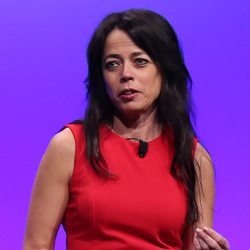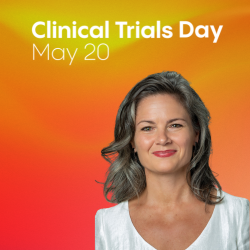“Folks like you are the lighthouse, you are the hope,” an emotional Kristen Smedley, health advocate, author, and mom told ACRP 2019 conference attendees April 13 in Nashville. “I’m so grateful to be sitting in this room with you,” she said as she shared a harrowing, but inspiring story of lives changed irrevocably by blindness.
In 2011, Smedley launched a mission to fund research and resources for children living with the rare eye disease her sons have. In less than eight years, the Curing Retinal Blindness Foundation raised over a million dollars and achieved the first legislation in US history to be submitted in Braille; legislation that advocates for better resources for blind and visually impaired Americans.
Smedley’s 2016 blog about changing people’s perceptions of blindness garnered worldwide attention and was followed by a 2017 TEDx talk on setting extraordinary expectations. She was one of twelve people in the world invited to testify before the Food and Drug Administration to advocate for the approval of the first ever gene therapy to reverse blindness. She is also the Pennsylvania Ambassador for the National Organization of Rare Disorders (NORD).
She reminded the ACRP audience to think carefully when setting up endpoints in clinical trials. It’s easy to let assumptions become unintended obstacles to better patient treatments. For example, while many sighted people would assume being able to read the letters on a standard eye chart with lists of letters and numbers is a good indicator of vision acuity, Smedley pointed out that for patients actually suffering from or facing a form of blindness, their individual indicators are quite different (e.g., how well they can see at dusk versus the middle of a bright, sunny day).
“The challenge with blindness is independence and mobility, or lack thereof,” she said. The patient community said, “’forget about the eye chart, we need independence and mobility and the rest will be good to go,’” Smedley said. “Think in terms of meaningful endpoints and outcomes that make sense for the patient you are working for,” she added. Even as she made the point, though, Smedley stressed “we’ve come a long way in communications with the patient community.”



